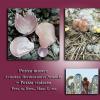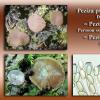
15-12-2025 15:48
 Danny Newman
Danny Newman
Melanospora cf. lagenaria on old, rotting, fallen

15-12-2025 15:54
 Johan Boonefaes
Johan Boonefaes
Unknown anamorph found on the ground in coastal sa

15-12-2025 21:11
 Hardware Tony
Hardware Tony
Small clavate hairs, negative croziers and IKI bb

15-12-2025 07:09
 Danny Newman
Danny Newman
indet. Rutstroemiaceae sp. on unk. fallen leavesMc

15-12-2025 07:05
 Danny Newman
Danny Newman
Pseudosclerococcum golindoi (det: Zotto)near Cosb

15-12-2025 11:49
 Danny Newman
Danny Newman
ITS sequences from the following two collections B

15-12-2025 12:34
 Danny Newman
Danny Newman
indet. Rhytismataceae on oak leafnear Purchase Roa

09-12-2025 12:06
 Andgelo Mombert
Andgelo Mombert
Bonjour,Je recherche l'article concernant Hypobryo
Peziza lobulata versus Peziza moseri
Bartusek Martin,
27-02-2013 15:01
Hans-Otto Baral,
27-02-2013 15:04

Re : Peziza lobulata versus Peziza moseri
Hi Martin
you are fully right! However, the other possibility is that the two species actually differ in their lipid content (study in the living state recommended). Regrettably I do not know these species, but like to follow the discussion here. :-)
Zotto
you are fully right! However, the other possibility is that the two species actually differ in their lipid content (study in the living state recommended). Regrettably I do not know these species, but like to follow the discussion here. :-)
Zotto
Mario Filippa,
28-02-2013 01:57
Re : Peziza lobulata versus Peziza moseri
Hi,
I have found both and even if I don't have a full description, I recall them rather well and macroscopically they are not so similar (but my experience is based only on a few apothecia).
In general, the oil drops may be a useful feature in making a key, but I'm sure that in a full description of all details, including pigmentation, ascus base, layers of the excipulum, shape and size of the cells and so on, it will become possible to found many other differences.
It is true that the oil drops can become invisible in many mounting media, but I think it's mandatory to observe everything in water, at first.
There are a lot of things that you can observe only in certains media: amiloidity in iodine, carminophily in acetocarmine and iron, nuclei with Giemsa stain, and so on... And they may be very, very important!
Regards
Mario
I have found both and even if I don't have a full description, I recall them rather well and macroscopically they are not so similar (but my experience is based only on a few apothecia).
In general, the oil drops may be a useful feature in making a key, but I'm sure that in a full description of all details, including pigmentation, ascus base, layers of the excipulum, shape and size of the cells and so on, it will become possible to found many other differences.
It is true that the oil drops can become invisible in many mounting media, but I think it's mandatory to observe everything in water, at first.
There are a lot of things that you can observe only in certains media: amiloidity in iodine, carminophily in acetocarmine and iron, nuclei with Giemsa stain, and so on... And they may be very, very important!
Regards
Mario
Martin Bemmann,
28-02-2013 20:12

Re : Peziza lobulata versus Peziza moseri
Dear Martin,
a German asco-enthusiast, Peter Püwert, who is reading the forum only, asked me to upload two plates of P. moseri and P. pseudoviolacea/lobulata.
He comments that the synonymy is confusing him as well, multiple collections may lead to further enlightenment.
Regards
Martin
a German asco-enthusiast, Peter Püwert, who is reading the forum only, asked me to upload two plates of P. moseri and P. pseudoviolacea/lobulata.
He comments that the synonymy is confusing him as well, multiple collections may lead to further enlightenment.
Regards
Martin
Bartusek Martin,
28-02-2013 21:15
Re : Peziza lobulata versus Peziza moseri
Yes, there is it visible well, the slide was prepared obviously in Melzer´s reagent, but I still want to ask whether it was a dry or a fresh material. Honestly, it is a bad habit not to add the method of the preparation of the slides to the key. It should be the essential part of the proper key.
Thank you all.
Thank you all.


